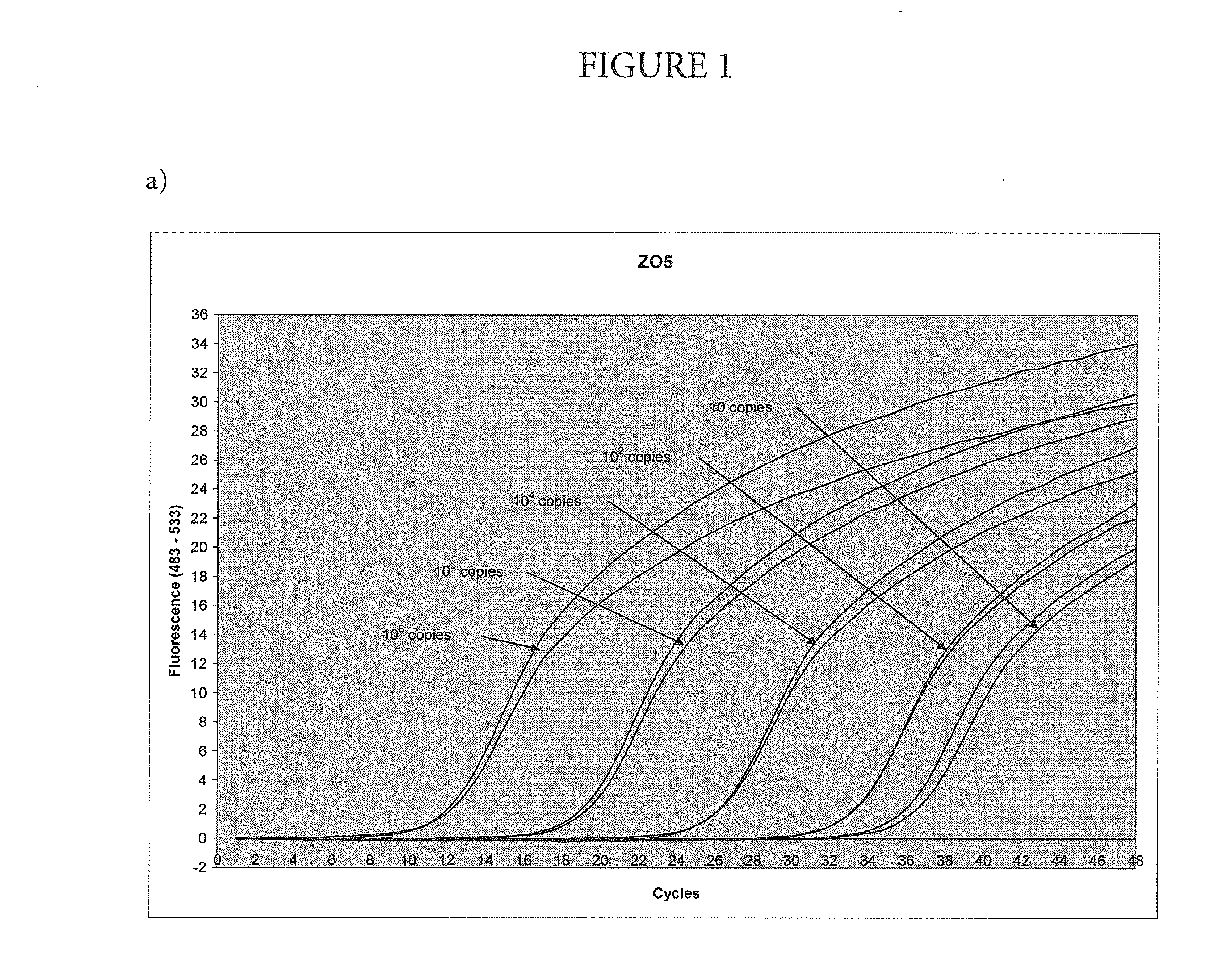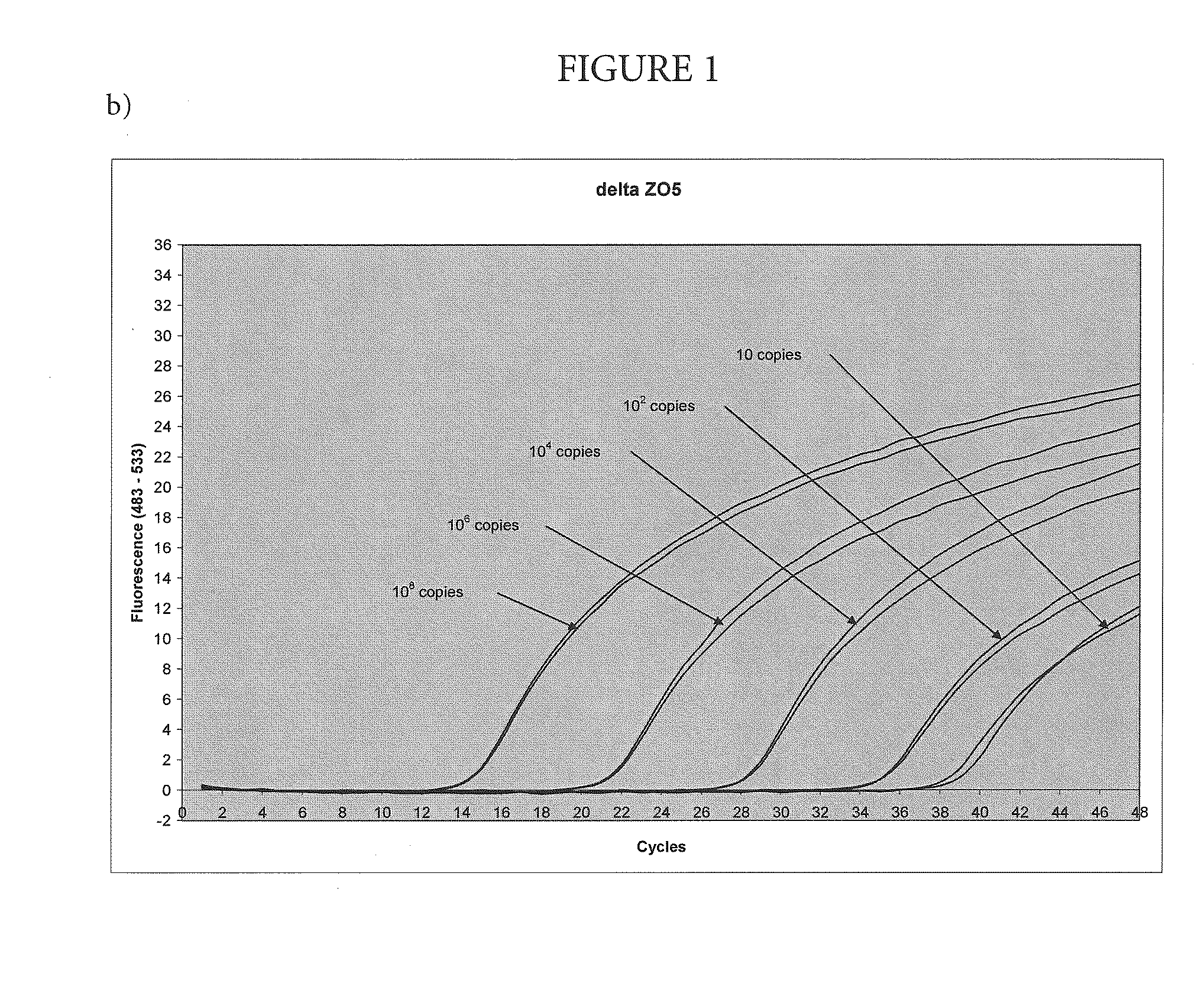Nuclease-Free Real-Time Detection of Nucleic Acids
a nucleic acid and real-time assay technology, applied in the field of in vitro amplification and nucleic acid detection, can solve the problems of cost and complexity, inability to take advantage of these superior nuclease-free enzymes in real-time assays, and inability to achieve the target sequen
- Summary
- Abstract
- Description
- Claims
- Application Information
AI Technical Summary
Problems solved by technology
Method used
Image
Examples
example i
[0051]Amplification and Detection of Various Amounts of Target with the Nuclease-Deficient and Nuclease-Proficientpolymerase
[0052]In this example, the method of the present invention was used to amplify a region of the human Factor V gene that includes the site of the Leiden mutation, cloned into a plasmid vector. The asymmetric PCR was conducted with a seven-fold excess of the excess primer over the limiting primer. The detection was performed with a hybridization probe labeled with a fluorescein dye and a BlackHole™ quencher as shown in Table 1. The probe was designed to hybridize to the excess strand.
TABLE 1Primers and probesUpstream primerSEQ ID NO.: 15′-TGAACCCACAGAAAATGATGCCCE-3′Downstream primerSEQ ID NO.: 25′-GGAAATGCCCCATTATTTAGCCAGGE-3′ProbeSEQ ID NO.: 45′-FCTGTATTCCTCGCCTGTCCAGQp-3′E = para-t-butyl benzyl dAF = cx-FAMQ = BHQ2p = 3′-phosphate
[0053]Each 100 μL reaction contained an amount of target DNA (between 10 and 108 copies, as indicated on FIG. 1) 5% glycerol; 50 mM T...
PUM
| Property | Measurement | Unit |
|---|---|---|
| Fluorescence | aaaaa | aaaaa |
Abstract
Description
Claims
Application Information
 Login to View More
Login to View More - R&D
- Intellectual Property
- Life Sciences
- Materials
- Tech Scout
- Unparalleled Data Quality
- Higher Quality Content
- 60% Fewer Hallucinations
Browse by: Latest US Patents, China's latest patents, Technical Efficacy Thesaurus, Application Domain, Technology Topic, Popular Technical Reports.
© 2025 PatSnap. All rights reserved.Legal|Privacy policy|Modern Slavery Act Transparency Statement|Sitemap|About US| Contact US: help@patsnap.com


